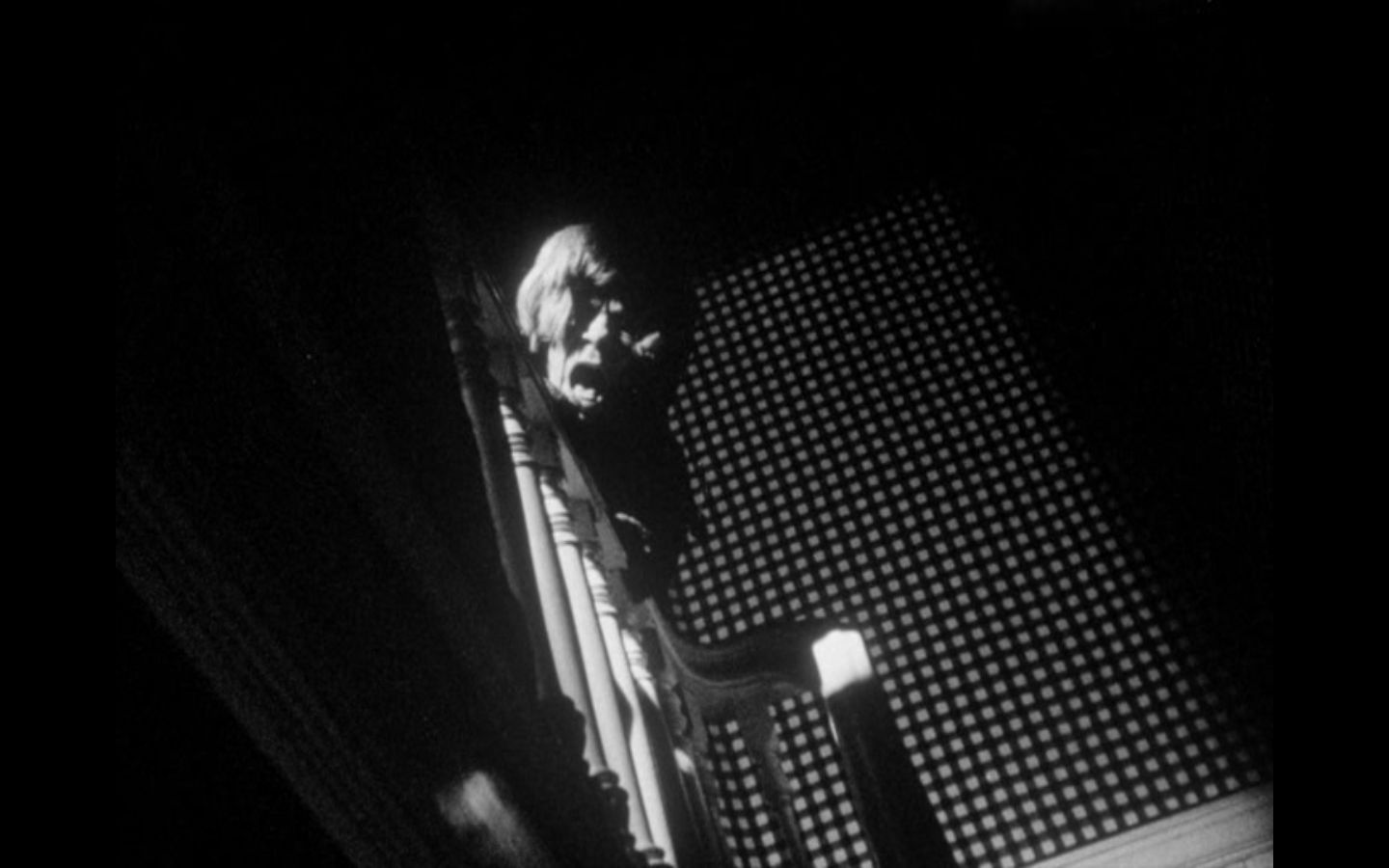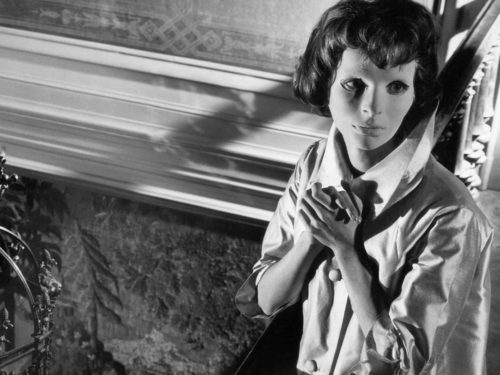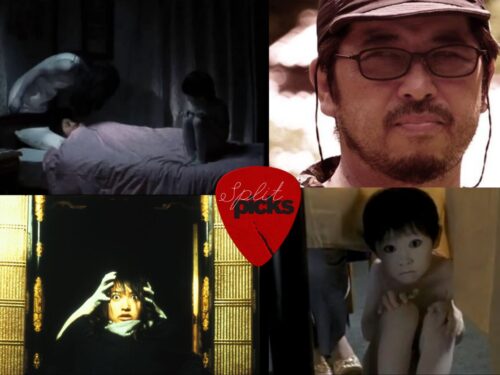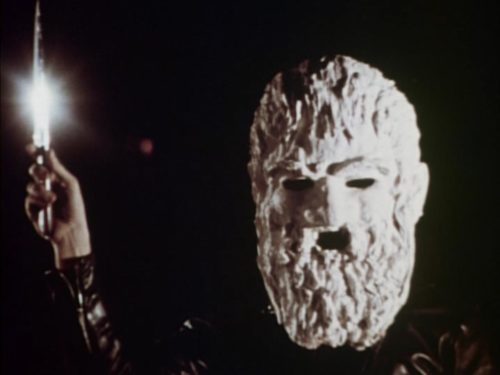Brett Wright explores the entirely unorthodox career and style of Andy Milligan, a singular figure in the world of exploitation filmmaking
“Inferior poets are absolutely fascinating. The worse their rhymes are, the more picturesque they look. The mere fact of having published a book of second-rate sonnets makes a man quite irresistible. He lives the poetry that he cannot write.”
Oscar Wilde, The Picture of Dorian Gray (1890)
During a Q&A with guitarist Bill Frisell at Portland’s Hollywood Theatre a few years ago, Frisell was asked to elaborate upon statements he makes about his style in Bill Frisell: A Portrait (2017), the film that screened before he came onstage. He described style as a matter of an artist’s limitations — a personal vision formed at the place where the artist’s abilities and articulation hit a ceiling in their attempt at expressing an idea. Clearly, this shouldn’t be understood as style representing a failure or lack of ability — unless the work in question is compromised entirely by a lack of personal vision or an over-reliance on convention. So often style tends to be associated with the heights of an individual’s creativity, not a ceiling being hit. Instead, Frisell associates every artists’ style with where they come up short in front of some impossible ideal in their own unique way, creating something new in the process.
I admit that it feels strange to begin these notes on Andy Milligan — the mean-spirited master of 42nd Street grindhouse cinema who made films with titles like Torture Dungeon (1970), The Rats are Coming! The Wolves are Here! (1971), and Bloodthirsty Butchers (1970) — with an anecdote about one of the world’s most sensitive and innovative guitar players. But I can think of few artists whose work demonstrates such an extreme example of someone whose style is so thoroughly defined by their limitations as Milligan. When one watches an Andy Milligan film, certain moments feel like collision points of their maker smashing into his expressive ceiling quite literally being captured on the celluloid. At times, it’s as if he is at war with his own shortcomings. As many recent reevaluations of Milligan’s work have already stated, during his lifetime most of his films were dismissed as entirely incompetent. Even those who appreciate his work must concede that the films are sloppy, grotesque, and often incomprehensible. But there is something undeniably personal and strange within his movies. Can any other sexploitation filmmaker claim to have been compared by critics to not only Ed Wood, but to John Cassavetes and Rainer Werner Fassbinder as well? With time and more information now available about Milligan than ever before, particularly regarding his determination to live the life of an artist, more nuanced perspectives have helped shed some light on the peculiarities of his style.
From what I have gathered, the majority of viewers tend to find Milligan through his horror films, such as The Ghastly Ones (1968) or The Body Beneath (1970). Maybe some are lucky enough to catch Seeds (1968), perhaps the definitive Milligan film, but still, the experience of even his most effective work is off-putting and strange. Milligan first made his name as a dressmaker and eventually became a success in New York’s off-off-Broadway theater scene in the early 1960s, staging controversial productions in cafes and experimental playhouses. He made his first film, Vapors, in 1965, which had its share of underground success, sharing bills with films like Andy Warhol’s My Hustler. Milligan then ventured into sexploitaiton and horror films and remained in that realm for most of his career.
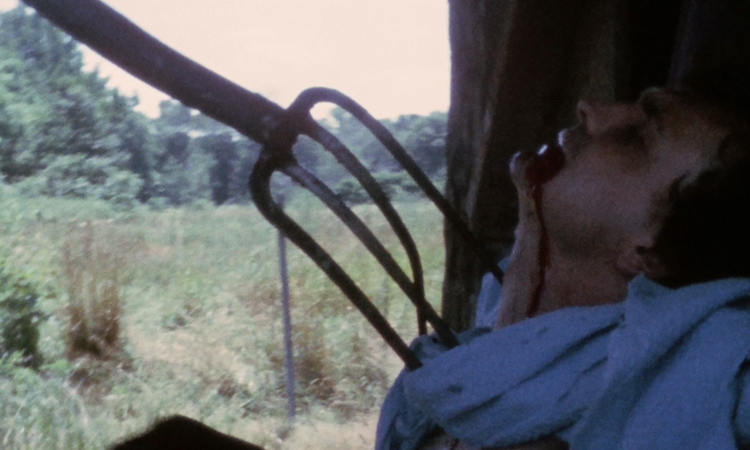
A Milligan production can be spotted from a mile away. In fact, if it weren’t for a few British accents (he spent some time working in England) and a werewolf or vampire here or there, it would be hard to tell most of his movies apart. His horror films, many of which are costume dramas and period pieces, engage with the same recurring themes and character types. Nearly all of them are about dysfunctional families battling and murdering each other over wills and various legacies. Family curses and incest are concerningly prevalent. Milligan’s non-horror films are rather sinister as well. Even his British drama Nightbirds (1970) has elements of horror in it, with murder and emotional abuse. His films are also incredibly heavy on dialogue. Excessive speaking roles are always risky when working with inexperienced actors, as Milligan often did, but he took that risk often. The results were rarely good, but made for some truly memorable and strange performances.
Working in his particular milieu of sexploitation and horror, Milligan had his share of pressures from producers, mostly over their insistance on adding sex scenes and violence. Milligan followed through on their demands, albeit rather halfheartedly. The gore scenes usually fly by in the blink of an eye, and sex and nudity is mostly handled with an air of indifference. Sometimes Milligan’s camera appears like it is struggling to stay focused on the nude bodies writhing around in front of it, ready to move on to the next dialogue-heavy scene.
There is something endearing and admirable in the way these films show a man working his ass off to express himself. Milligan’s productions are so effortful. Throughout his career, he wore nearly every hat necessary to get a film off the ground. He wrote, directed, made costumes, shot, edited, and even acted in small roles on occasion. Most of the smaller jobs he undertook were done under the guise of pseudonyms to create the impression that more people were involved in the production. You can sense the determination behind these films, which gives the airplanes flying through his medieval period pieces and the mistimed special effects a strange charm within his rather nasty and cynical movies.
But Milligan’s films wouldn’t be worth talking about if they were just herculean efforts of low-budget moviemaking. One would have to be senseless to not feel a straining towards something more than Milligan was capable of capturing on film. With the exception of Vapors — far and away his best film — and perhaps Seeds, Milligan’s life as an artist is much more fascinating than the art he actually created. To talk of Milligan’s art, though, is not to speak of failed expressions of the world’s beauty. Milligan was, by nearly all accounts, a hateful, troubled, and bitter soul. (John Borske and Gerald Jacuzzo do give some perspective into Milligan’s kinder side in an interview included on Vinegar Syndrome’s now out-of-print Seeds/Vapors Blu-ray.) He had a hard life, one marked by abuses suffered and inflicted. He was raised by an unstable and manipulative alcoholic mother who left him deeply distrustful of women. Milligan was an out gay man who contracted AIDS later in his life and was buried in an unmarked grave in Los Angeles (only recently did someone pay for a proper marking at the mass gravesite). Stories abound from his personal and professional life of questionable and reprehensible behavior. He married one of his actresses during the shooting of Seeds, and on their wedding night, he celebrated without her at his favorite gay bar. The marriage was over within a year. On the set of Nightbirds, the script called for a bird to be killed on camera. The actress rightfully refused, so Andy, furious, stepped out for a few minutes with the helpless creature and returned with its corpse ready for its close-up.
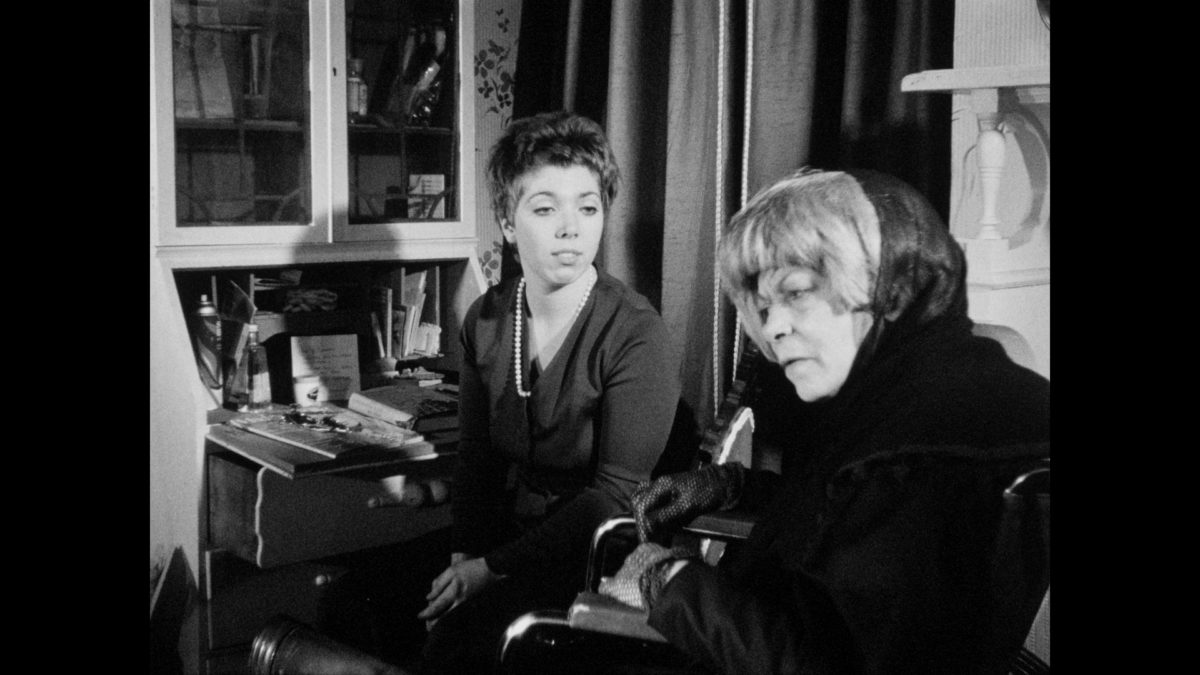
Milligan’s films often feel like retaliations against a cruel world and everything in it — the evil and the innocent. His characters are often scarred by the sins of their fathers and, more frequently, their mothers. Even when the abusive parental figures are still living within the films, their presence is that of an evil spirit, no doubt influenced by Milligan’s relationship with his own mother. As his frequent collaborator Hal Borske says in a commentary track for The Ghastly Ones, “Andy’s mother is in every movie.” There is no better example of this than the physically and soulfully crippled matriarch of Seeds, in which the deeply troubled Manning family reunites for Christmas in their widowed mother’s home and are killed off one by one. Others have noted that Seeds feels like a very personal film for Milligan. As played by Maggie Rogers, the mother shouts insults at her children while perched in her wheelchair like a gargoyle atop the family mansion’s staircase. She drinks herself to death and doesn’t care for the consequences. Her overbearing influence upon her children has led to the creation of a sex-obsessed priest and an incestuous relationship between one of her sons and her caretaker daughter. Even sweet Buster, the youngest, is a Nazi-sympathizing delinquent who is perpetually facing expulsion from boarding schools. For the Mannings, and for Milligan, blood ties pull like a noose.
With their tabloidesque premises and low budget aesthetics, it is easy to understand why many assume Milligan was an Al Adamson grindhouse-type filmmaker. Adamson and others in that vein produced and promoted their low-budget films with a “most bang for your buck” mentality, making as many movies as they could on the cheap, doing whatever they could with the little they had to fill sticky seats in divey theaters and drive-ins. You get quite a bit for your money with Milligan, but it certainly will not be what is expected, and most certainly not what most people desire in a cheap exploitation movie. Sure, Milligan would hit his quotas for gore and nudity required by schlock producers. But his attention and efforts are clearly more dialed in to the drama and emotions of his characters, making what should have been paint-by-numbers flicks for insomniacs into mean-spirited, yet uncommonly personal oddities.
Milligan’s work tends to be much more intense, more dramatic, and more searching than those of his grindhouse contemporaries. His most emotional scenes can leave you feeling embarrassed, not because of technical shortcomings or the lack of traditional acting talent in front of the camera — those aspects are mostly endearing, as if the angriest Little Rascal grew up but still forced his friends to act in backyard productions — but for the sheer conviction behind the emotions of these cheaply made exploitation films. Milligan’s work makes nearly every film before or after it feel modest. He lets his every dark and troubling emotion fly onto the screen. So often filmmakers can bury themselves in genre trappings, but Milligan’s presence doesn’t disappear within the costume dramas and murder plots. Even the most extravagant melodramas seem tame next to something like Seeds. Other filmmakers like John Waters reach for the same extremes as Milligan, but they mostly stretch it into comedy and camp. Even the most ridiculous Milligan films have a steeliness about them. His collaborators have said that nothing in Milligan’s work, besides the odd joke or one-liner, was intended as funny or pitched to the extreme for humor’s sake. Milligan’s intentions were serious. He considered himself an artist.
Milligan’s style feels born of so much pain-filled passion and desire for something that can’t be achieved through the means afforded him. Few exploitation or horror filmmakers allow you to sense the efforts that went into the expression in such a strange fashion. The American horror greats who were revolutionizing the genre while Milligan made his films in the late 1960s and early 1970s, like Tobe Hooper or George A. Romero were capable of working from a more emotionally and critically detached perspective within their films while subjecting our eyeballs to horrific images. Milligan was incapable of such distance. He is engaged so whole-heartedly in the drama and the characters, that it leaves a stinging pain in one’s side to watch as his films fumble so wildly and earnestly with their emotions between scenes of gore.
I discovered Milligan through Vapors. By beginning with his first film, I believe it set me at an advantage to better recognize the dramatic ambitions in his subsequent work. Vapors was written by Hope Stansbury, who went on to give some of the most memorable performances in later Milligan films, but the 32 minutes of Vapors feel like Milligan boiled down to his essence. Taking place in a busy New York City bathhouse, a gay man (Gerald Jacuzzo) looking for a hookup meets a slightly older gentleman (Robert Dahdah) who isn’t there for the same reasons. It is the one year anniversary of the day he lost his son, who he appears to have had a profound, yet potentially incestuous, love for. The film is a far cry from Milligan’s later work: there are no kills, and besides a final insert shot of a fully nude man, there is nothing exploitative about the film. In fact, Vapors is surprisingly tender in the way it builds the relationship between the two men. The film doesn’t end on a particularly positive note, but for most of Vapors, Milligan creates a fragile little world where these two lonely men can speak openly to one another within the frantic atmosphere of the bathhouse.
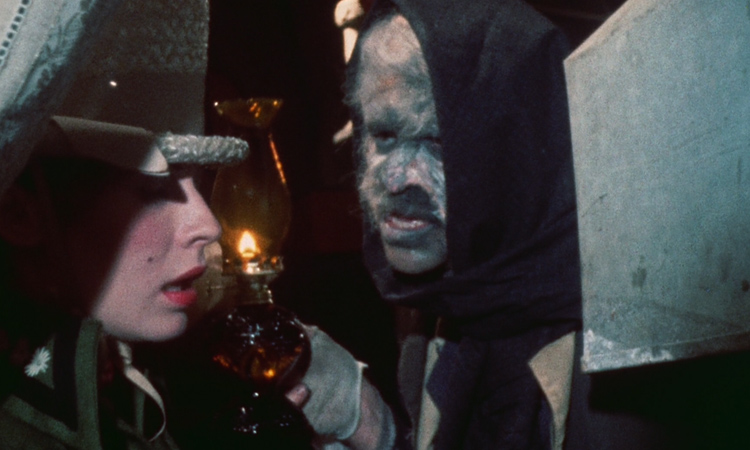
You can see these fleeting signs of humanity show through in other films as well, but they are rarely sustained and often doubled over with cruelty. Look no further than one of Milligan’s two performances in The Rats Are Coming! The Werewolves Are Here! to see the most extreme example of how he would work character-driven tangents into his horror films. He plays a talkative gunsmith who does everything he can to not close a sale on a pistol. When it comes time to explain why he is so eager to keep showing guns to his young female customer, Milligan goes for it, delivering a heartfelt monologue about how lonely he is every day in his shop in a delicate British accent. In his later hardcore film Fleshpot on 42nd Street (1973), another of his stronger works, Milligan creates a rather affecting feature-length drama about New York sex workers between the explicit sex scenes. There are glimmers of the promise found in Vapors, albeit almost entirely consumed by the cynicism that pervades over all of his other films. It should be noted that Milligan’s other character in Rats are Coming is a different shopkeeper, this one an alcoholic who has been partially eaten by the rats he raises and sells to Hope Stansbury. She returns to his store shortly after the sale and sets him on fire.
But what if Milligan, the man who claimed to have been “born angry,” had developed the formal abilities that would have allowed him to more articulately explore his emotions and psyche? What if he had pursued the dramatic promise of Vapors, which is truly an emotionally complex film, rather than following the exploitation path that would not only lead him through one of the most unconventional careers in cinema history, but also to a pauper’s grave? In Milligan’s scripts, “swirl camera” is an infamous recurring direction. These words appear at the crest of the most tumultuous scenes, most often after a murder. What we see is exactly as advertised: Milligan whips his camera around like a lunatic, blurring the world into a violent smear of indecipherable textures. Stephen Thrower describes these moments as “stylistic frustration… camerawork at wit’s end.” It’s the equivalent of Leatherface windmilling his chainsaw at the conclusion of the original Texas Chain Saw Massacre (1974): He has come up short in capturing his final victim. That built-up energy has to go somewhere as she disappears from view. The villain has reached a barrier and we see the collision.
A film like Seeds is overwhelmingly emotional. It is sloppy in a technical sense — which should matter little to mature viewers and hardly distinguishes it among low-budget horror fare — but what makes it and its filmmaker so singular is its sloppy handling of expression. I shudder to think what Milligan could have culled from the depths of his troubled soul if he had had more control. But what comes out in his actual films is so pure and distinctly his that if Milligan had had more of a grasp on how to make movies, he might not be as worthy of discussion. Take him or leave him, it is that inarticulate, unrestrained, and passionate bleeding heart at the center of these films that matters most.
Find the complete October Horror 2021 series here:
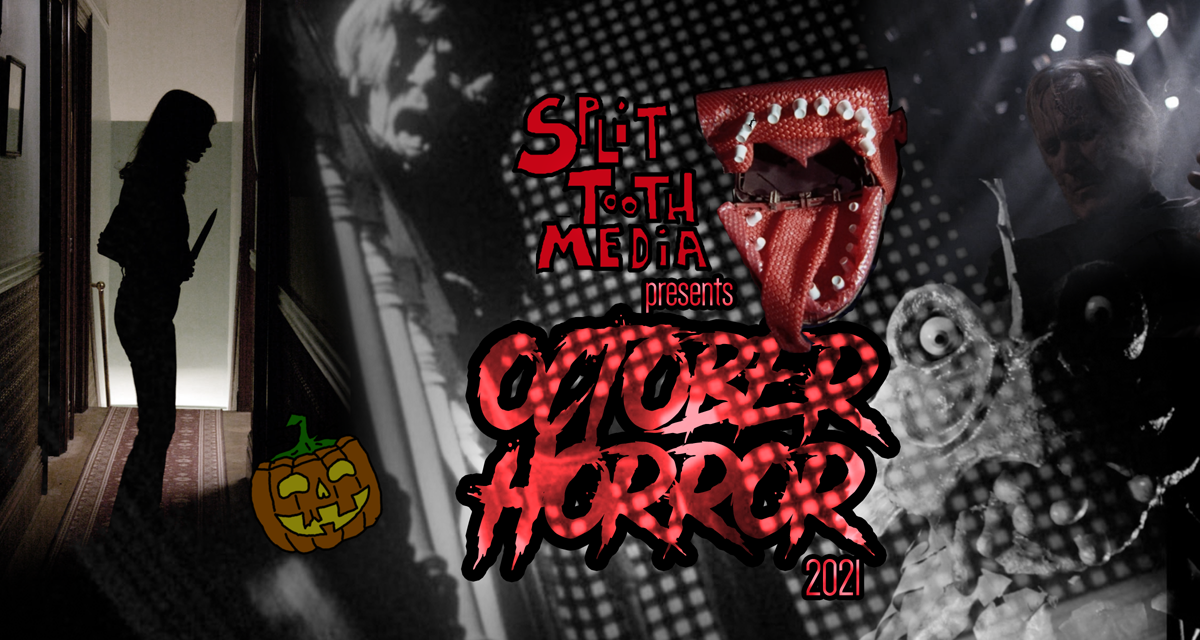
Purchase The Dungeon of Andy Milligan Blu-ray Collection from Severin Films
Stay up to date with all things Split Tooth Media and follow Brett on Twitter and Letterboxd
(Split Tooth may earn a commission from purchases made through affiliate links on our site.)

